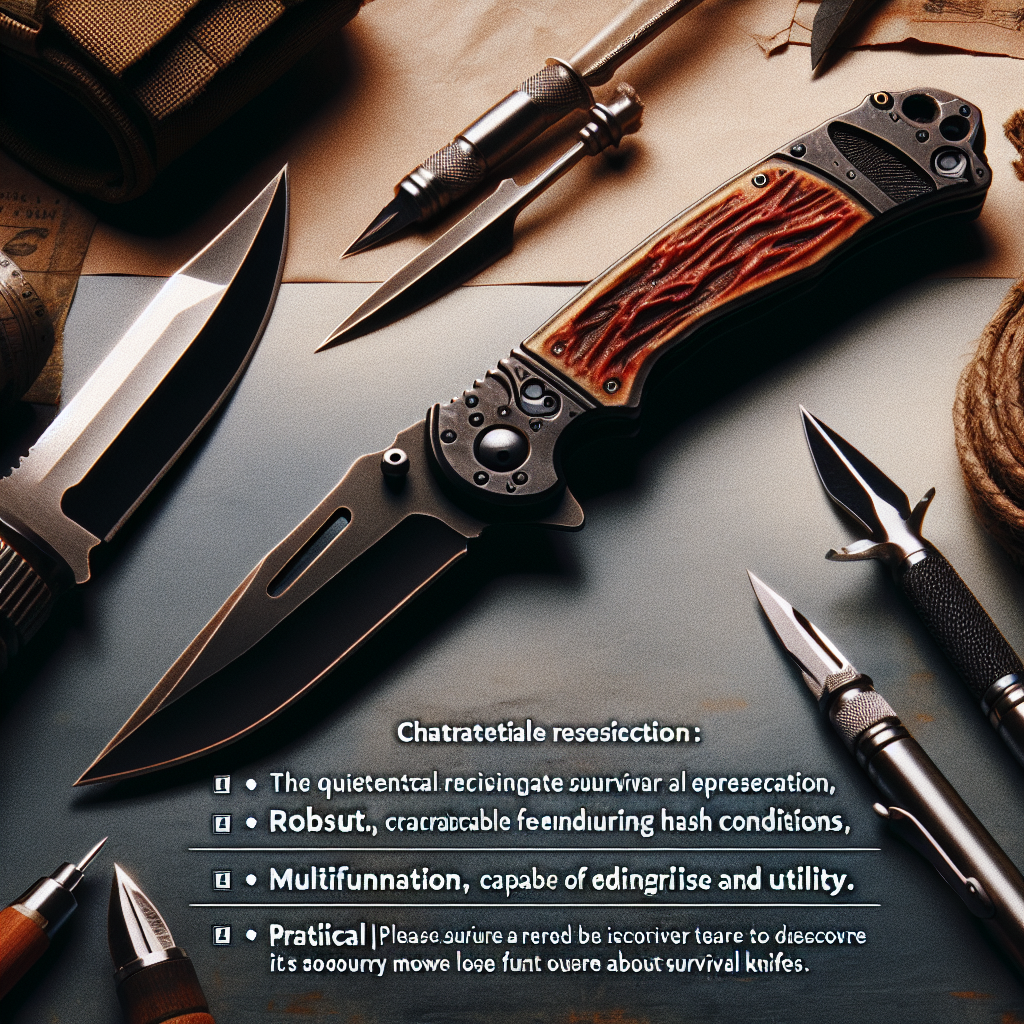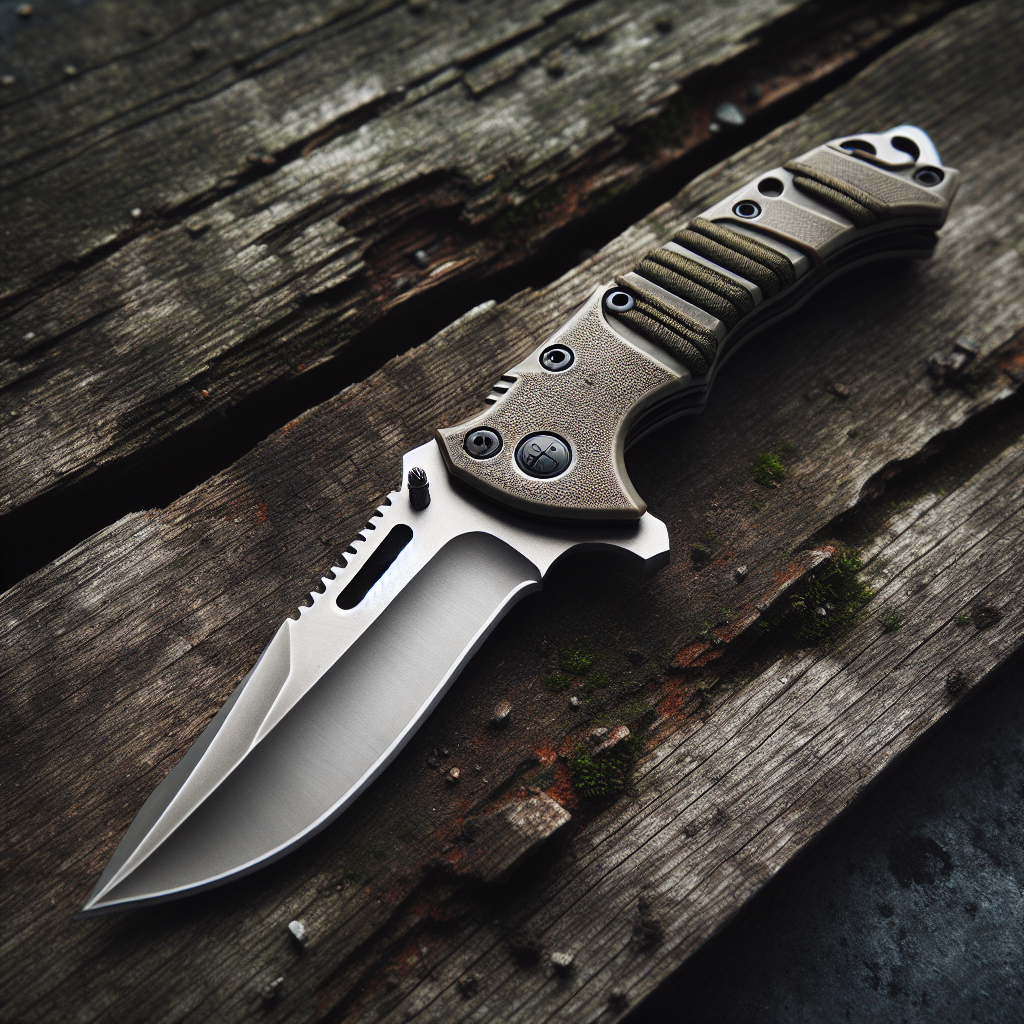Are you an avid adventurer, always seeking out new challenges in the great outdoors? If so, then you know the indispensable role a high-quality survival knife plays in your equipment arsenal. But with so many options available, how do you determine which one is the best? In this article, we will guide you through the process of evaluating the best survival knives and highlight the key factors to consider. Whether you’re a seasoned hiker or just starting out on your outdoor journey, this comprehensive guide will help you make an informed decision and ensure you’re well-prepared for any wilderness scenario. So let’s dive in and explore what to look for when it comes to selecting the perfect survival knife.
Evaluating the Best Survival Knives: What to Look For
Survival knives are essential tools for anyone venturing into the outdoors. Whether you’re an avid hiker, camper, or hunter, a reliable survival knife can be a lifesaver in emergency situations. But with so many options available on the market, how do you choose the best survival knife for your needs? In this article, we will discuss the key factors to consider when evaluating survival knives to help you make an informed decision.
Importance of Choosing the Right Survival Knife
The right survival knife can make a world of difference in critical situations. It is not just a tool; it becomes an extension of your hand and an essential ally in the wild. Here’s why choosing the right survival knife is crucial:
-
Versatility: A good survival knife can serve multiple purposes, from cutting branches and ropes to preparing food and building shelters.
-
Reliability: In emergency situations, you need a knife that will perform flawlessly when you need it the most. A reliable survival knife can withstand harsh conditions and maintain its functionality.
-
Dependability: Your survival knife should be a trustworthy companion that you can always count on. It should be durable enough to withstand rigorous use and remain functional for years to come.
Factors to Consider When Evaluating Survival Knives
Before making a purchase, consider the following factors to ensure you find the best survival knife for your specific needs:
-
Intended Use and Environment: Think about the primary tasks you will use the knife for and the environment you’ll be in. Different tasks and environments may require specific features and functionalities.
-
Budget: Determine how much you are willing to spend on a survival knife. While quality comes at a price, there are options available for every budget.
-
Legal Considerations: Check the local laws and regulations regarding blade length and features. Ensure that the survival knife you choose complies with the legal requirements of your area.
-
Personal Preference: Consider your own preferences in terms of knife design, handle material, and other features. The knife should feel comfortable in your hand and suit your personal style.
Now that we have covered the main factors to consider, let’s delve into the specific characteristics that make a survival knife reliable and efficient.

Blade Material
The material of the blade plays a crucial role in determining the knife’s performance and durability. Here are some common blade materials and their pros and cons:
-
Stainless Steel: Stainless steel blades are highly resistant to corrosion and require minimal maintenance. However, they may not hold an edge as well as other blade materials.
-
Carbon Steel: Carbon steel blades are known for their excellent edge retention and durability. However, they are more prone to rust and require frequent maintenance.
-
High-Carbon Stainless Steel: This type of blade material combines the best of both worlds—high corrosion resistance and superior edge retention. It is a popular choice among survival knife enthusiasts.
Selecting the right blade material depends on your specific needs and preferences. Consider factors such as maintenance requirements, edge retention, and corrosion resistance when choosing the blade material that suits you best.
Blade Length
The length of the blade is another important aspect to consider. While there is no universally ideal blade length for survival knives, certain considerations can help guide your decision:
-
General Purpose Tasks: For general outdoor tasks like cutting rope, preparing food, and building shelters, a blade length of 4-6 inches is typically sufficient.
-
Defense and Heavy-Duty Tasks: If you anticipate using your survival knife for self-defense or heavy-duty tasks like chopping branches, a longer blade of 6-8 inches may be more suitable.

Blade Design
The design of the blade affects its functionality for specific tasks. Here are some common blade designs and their advantages and disadvantages:
-
Drop Point: Drop point blades are versatile and suitable for various tasks. They have a strong, robust tip and are easy to control. However, their tip may be less suitable for piercing tasks.
-
Clip Point: Clip point blades have a fine and sharp point, making them excellent for piercing tasks. However, their point may be more prone to breaking or snapping under heavy use.
-
Tanto: Tanto blades feature a strong, reinforced tip that excels in piercing tough materials. However, their design may be less suitable for general outdoor tasks.
Consider the types of tasks you expect to perform with your survival knife and choose a blade design that aligns with those needs.
Handle Material
The handle material plays a significant role in ensuring a comfortable and secure grip. Here are some popular handle materials and their pros and cons:
-
G10: G10 handles are lightweight, durable, and have excellent grip, even in wet conditions. However, they may be less comfortable during prolonged use.
-
Micarta: Micarta handles offer good grip and are resistant to moisture. They are also comfortable to hold, but they may not be as durable as other materials.
-
Rubber: Rubber handles provide excellent grip and cushioning, making them ideal for extended use. However, they may not be as durable as other handle materials.
Consider factors such as grip, comfort, and durability when selecting the handle material that best suits your needs.
Handle Design
In addition to the material, the design of the handle is essential for ergonomics and comfort. Here are different handle designs to consider:
-
Full Tang: Full tang knives have the blade extending throughout the length of the handle, providing excellent strength and stability. They are highly durable and can withstand heavy use.
-
Partial Tang: Partial tang knives have the blade extending only partially into the handle. While they may be lighter, they are generally not as durable as full tang knives.
Consider your preferred grip style and the type of tasks you will be performing when choosing the handle design.
Tang
The tang refers to the portion of the blade that extends into the handle. Different tang types offer distinct advantages and disadvantages:
-
Full Tang: Full tang knives have the blade extending throughout the length of the handle, providing superior strength and stability. They are less likely to break under heavy use.
-
Partial Tang: Partial tang knives have the blade extending only partially into the handle. While they may be lighter, they are generally less durable than full tang knives.
When it comes to tang type, prioritize durability and strength for a reliable survival knife.
Additional Features
Some survival knives come with additional features that can enhance their functionality. Consider the following features based on your specific needs:
-
Safety Features: Look for features like a finger guard or a locking mechanism to ensure safe handling and prevent accidents.
-
Full Tang vs. Partial Tang: As mentioned earlier, the choice between full tang and partial tang depends on your requirements for durability and weight.
-
Blade Edge Type: Survival knives often come with different blade edge types, such as straight edge or serrated edge. Consider the tasks you plan to perform and choose the appropriate blade edge type.
-
Other Useful Tools and Features: Some survival knives may include additional tools like a fire starter, a whistle, or a glass breaker. Evaluate whether these extra tools are necessary for your outdoor activities.
By considering these additional features, you can find a survival knife that caters to your unique needs and enhances your outdoor experience.
In conclusion, choosing the right survival knife requires careful consideration of various factors such as blade material, length, design, handle material, and additional features. By evaluating these factors based on your specific needs and preferences, you can select a reliable and efficient survival knife that will serve you well in any outdoor situation. Remember to prioritize versatility, reliability, and dependability in your search for the best survival knife to ensure your safety and success in the great outdoors.
